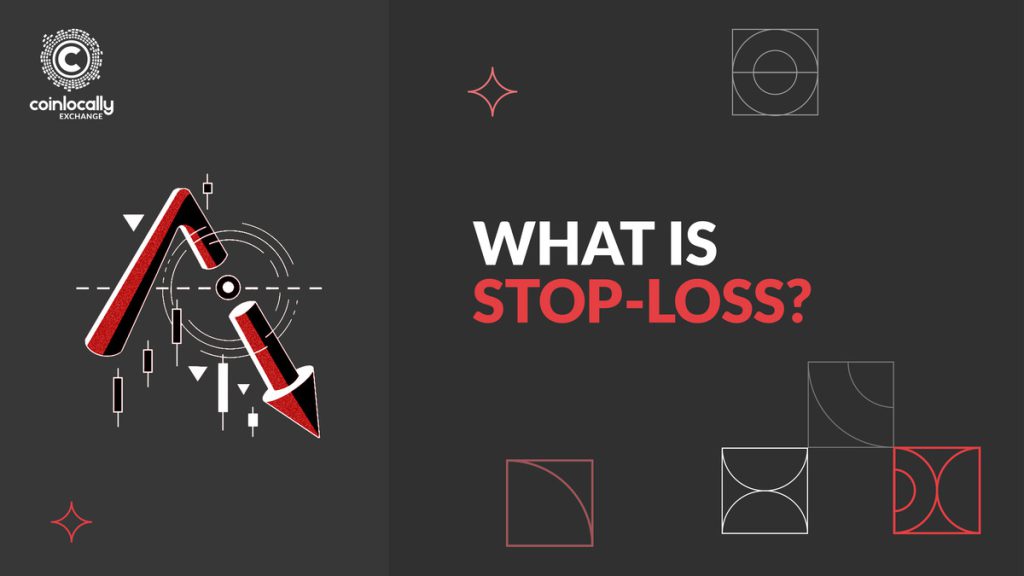What is stop loss? Stop-loss is a term commonly used in trading to describe a mechanism that allows traders to limit their potential losses in case the market moves against them. In simple terms, Stop-loss refers to an order placed by a trader to automatically sell a security or asset at a pre-determined price in order to limit potential losses.
Table of Contents
• What Is Stop-loss in Trading?
• What’s the Difference Between Stop-loss & Stop-Limit?
• Advantages and Disadvantages of Stop-loss & Stop-Limit
• How risky is it to put a Stop-Loss Order on Your stocks?
• What Sets a Market Order, Limit Order, and Stop Order Apart?
• Are Stop-Loss and Stop-Limit Orders Appropriate for Regular Investors?
What Is Stop-loss in Trading?
The concept of Stop-loss is particularly important for traders who engage in high-risk trades or those who may not be able to monitor their positions continuously. When a trader places a Stop-loss order, they are essentially telling their broker to sell the security or asset at a specific price level in order to limit their losses if the market moves against them.
For example, let’s say that a trader purchases 100 shares of stock at $50 per share. The trader may decide to place a Stop-loss order at $45 per share, meaning that if the price of the stock falls to $45 or below, the trader’s broker will automatically sell the shares to limit the potential loss. In this scenario, the trader would only lose $5 per share rather than potentially losing much more if the price were to continue falling.
Stop-loss orders can be particularly useful for traders who are prone to emotional decision-making or who may not be able to monitor their positions continuously. By placing a Stop-loss order, traders can limit their losses and avoid making impulsive decisions that could lead to even greater losses.
It’s important to note, however, that Stop-loss orders are not foolproof and may not always work as intended. In some cases, market conditions may cause a security or asset to gap down or gap up, meaning that the price may move rapidly without any trades occurring at the Stop-loss price. This can result in a trader experiencing a larger loss than they had anticipated.
Stop-loss orders are important for traders who engage in high-risk trades or who may not be able to monitor their positions continuously. They allow their broker to sell the security or asset at a specific price level to limit their losses if the market moves against them. However, they are not foolproof and may not always work as intended. In some cases, market conditions may cause the price to move rapidly without any trades occurring at the Stop-loss price, leading to a larger loss than anticipated.
Stop-loss Strategy
When a trader opens a position but places an order to quit the position at a specified loss level, this is known as a stop-loss order. Short sellers can also utilize stop-loss orders if the stop causes a buy order to cover rather than a sell order.
For instance, if a trader buys a stock at $30 but decides to sell it at $25 to limit potential losses, they would enter a stop order to sell the stock at $25. The trader’s order turns to become a market order and is executed at the next open bid if the stock drops to $25, at which point the stop-loss activates. Accordingly, the order may arrive for less than $25 or for more than $25 depending on the next bid price.
Important: When a stop-loss is activated, the contract will be executed at the market price rather than the stop-loss price. For securities with higher volatility, there is a greater chance that the execution price will be less than the stop-loss price.
Once the stop price is reached, a stop-loss order becomes a market order. An investor can change their stop-loss order into a stop-limit order if they desire more control over the price at which the trade is executed.
Stop-loss orders are used by traders to limit potential losses by placing an order to quit a position at a specified loss level. Short sellers can also utilize stop-loss orders if the stop causes a buy order to cover rather than a sell order. When a stop-loss is activated, the contract will be executed at the market price rather than the stop-loss price. Once the stop price is reached, the order becomes a market order and an investor can change their stop-loss order into a stop-limit order if they want more control over the price at which the trade is executed.
What is Stop-Limit?
A stop-limit order is a type of order used in trading that combines the features of a stop order and a limit order.
A stop order is an order that is placed with a broker to buy or sell a security once the price of the security reaches a certain level. When the security’s price reaches the stop price, the stop order becomes a market order and is executed at the best available price.
A limit order is an order to buy or sell a security at a specific price or better. If the limit price is not reached, the order is not executed.
A stop-limit order involves setting both a stop price and a limit price. The stop price is the price at which the stop-limit order becomes a limit order to buy or sell, and the limit price is the maximum price at which the trade will be executed. If the stop price is reached but the limit price is not, the order will not be executed.
For example, let’s say you want to sell a stock if it drops to $50 per share. You could place a stop-limit order with a stop price of $50 and a limit price of $48. This means that if the stock drops to $50, the stop-limit order becomes a limit order to sell, but it will only be executed at a price of $48 or higher.
A stop-limit order is a type of order used in trading that combines the features of a stop order and a limit order. It involves setting both a stop price and a limit price, and if the stop price is reached but the limit price is not, the order will not be executed. For example, if a stock drops to $50, it will only be executed at a price of $48 or higher.
What’s the Difference Between Stop-loss & Stop-Limit?
Stop-loss and Stop-Limit are both types of orders that investors can place to limit their losses or protect their profits.
A Stop-loss order is an order placed to sell a security once it reaches a certain price point, which is called the “stop price.” The stop price is typically set below the current market price for a long position, and above the current market price for a short position. Once the stop price is reached, the Stop-loss order is triggered and the security is sold at the prevailing market price. A Stop-loss order does not guarantee that the security will be sold at the stop price, but rather that it will be sold as soon as possible after the stop price is triggered.
A Stop-Limit order is similar to a Stop-loss order, but it includes an additional “limit price.” The limit price sets the minimum price at which the security can be sold once the stop price is triggered. This means that the Stop-Limit order will only be executed if the security can be sold at or above the limit price. If the market price falls below the limit price, the Stop-Limit order may not be executed.
In summary, a Stop-loss order is designed to limit losses by selling a security at the market price once a certain stop price is reached, while a Stop-Limit order is designed to limit losses while also setting a minimum limit price at which the security can be sold.
Top loss and Stop-Limit orders are two types of orders that investors can place to limit their losses or protect their profits. A Stop-loss order is an order placed to sell a security once it reaches a certain price point, which is called the “stop price”. A Stop-Limit order is similar to a Stop-loss order, but includes an additional “limit price”. The limit price sets the minimum price at which the security can be sold once the stop price is triggered, and if the market price falls below the limit price, the Stop-Limit order may not be executed.
Advantages and Disadvantages of Stop-loss & Stop-Limit
Both forms of instruction have advantages and drawbacks. Both provide possible hedge protection against negative securities price movement in general. However, there are important distinctions between these orders’ fees, execution standards, and how they execute (or don’t execute).
Advantages
Stop-Loss Orders
- Guarantees a trade will take place
- Protects against further decline for underperforming securities
- Hedges against short-term volatility
- Protects against losses when a security moves in the opposite direction of an investor’s holding.
Stop-Limit Orders
- Provides flexibility because investors can change their positions if the limit price is missed,
- Protects against high price volatility,
- Guarantees a minimum price at which a trade will execute, and
- Limits losses if a security moves in the opposite direction of the investor’s position.
Stop-Loss Orders guarantee a trade will take place, protect against further decline, hedge against short-term volatility, and limit losses when a security moves in the opposite direction of an investor’s position.
Disadvantages
Stop-Loss Order
- Provides little to no flexibility because the order is guaranteed to trigger if the Stop-loss price is reached.
- When the order is triggered, it executes at market pricing, which may be less than the stop order loss price depending on open market trades.
- Exposes investors to the possibility of other investors attempting to remove their Stop-Limits.
- Requires knowledge of how prices are determined because different brokers have different criteria for initiating and closing positions.
Stop-Limit Order
- Investors are exposed to the risk of other investors attempting to take out their stop levels.
- If the service is not provided for free by the broker, it may be necessary to pay a potentially high commission fee.
- It may also be necessary to have knowledge of price determination procedures because different brokers have different standards for triggering and executing positions.
Stop-Loss Order provides little flexibility and exposes investors to risk of other investors taking out their stop levels. Stop-Limit Order requires knowledge of price determination procedures and may require a commission fee.
How risky is it to put a Stop-Loss Order on Your stocks?
Investors can use stop-loss orders to reduce investing risk if they wish to minimize the potential loss on their equities. A stop-loss order can be more appropriate for your investment needs if you are risk-averse or have a short investment horizon.
What Sets a Market Order, Limit Order, and Stop Order Apart?
A market order is a trade that is promptly executed at the current market price. A limit order is a trade that opens when the market price is reached, but it doesn’t close until the limit price is reached. When the stop-loss price is reached, a stop order is activated, however the deal may actually execute below the stop-loss price.
Are Stop-Loss Orders Risky?
A stop-loss order is frequently used as a risk-reduction strategy to reduce prospective losses. Although not inherently dangerous, stop-loss orders have drawbacks and shortcomings.
Are Stop-Loss and Stop-Limit Orders Appropriate for Regular Investors?
Investors can employ stop-loss or stop-limit orders to safeguard against negative price fluctuations or to assure the capture of gains. Stop-loss orders are frequently provided without charge by modern brokers, however stop-limit orders can incur an additional brokerage charge.
Stop-loss orders are a risk-reduction strategy used to reduce investing risk, but have drawbacks and shortcomings. They can be more appropriate for risk-averse investors or those with a short investment horizon. They are provided without charge by modern brokers, but can incur an additional brokerage charge.
Conclusion
Stop-loss is a key concept in trading that allows traders to limit their potential losses by automatically selling a security or asset at a pre-determined price. While Stop-loss orders can be a useful tool for managing risk, traders should also be aware of their limitations and consider using other risk management strategies in conjunction with Stop-loss orders.






